Maestros del Mezcal, known for its Encuentro Nacional, is now diversifying into international distribution while pushing for the approval of a game-changing law
Maestros del Mezcal is a non-profit organization founded in 2014 by Abel Alcantara, a former public officer who in the late nineties, learned about mezcal from family producers in Guerrero while working as coordinator of the Program for the Development of Priority Areas (PDZP in Spanish). This is a federal program set up to address the lack of basic services in homes, located in very high and highly marginalized municipalities. This work inspired him to found an organization focused on the promotion of traditional mezcal, always with the final goal of improving the quality of life of the traditional mezcal producers.
According to their website, Maestros del Mezcal currently represents about 200 producers from Oaxaca that includes the Mixteca region, the Central Valleys and the Sierra Sur. In 2017, they organized the first Encuentro Nacional de Maestros Mezcaleros to give visibility to traditional producers providing them with a platform in which they could sell directly to consumers without intermediaries. This event has become the reference point for traditional mezcal in the country and this year, they celebrated the 5th Encuentro with the participation of 100 producers from all regions of Mexico. But with a growing interest in mezcal, and more mezcal events, how does it keep relevant?
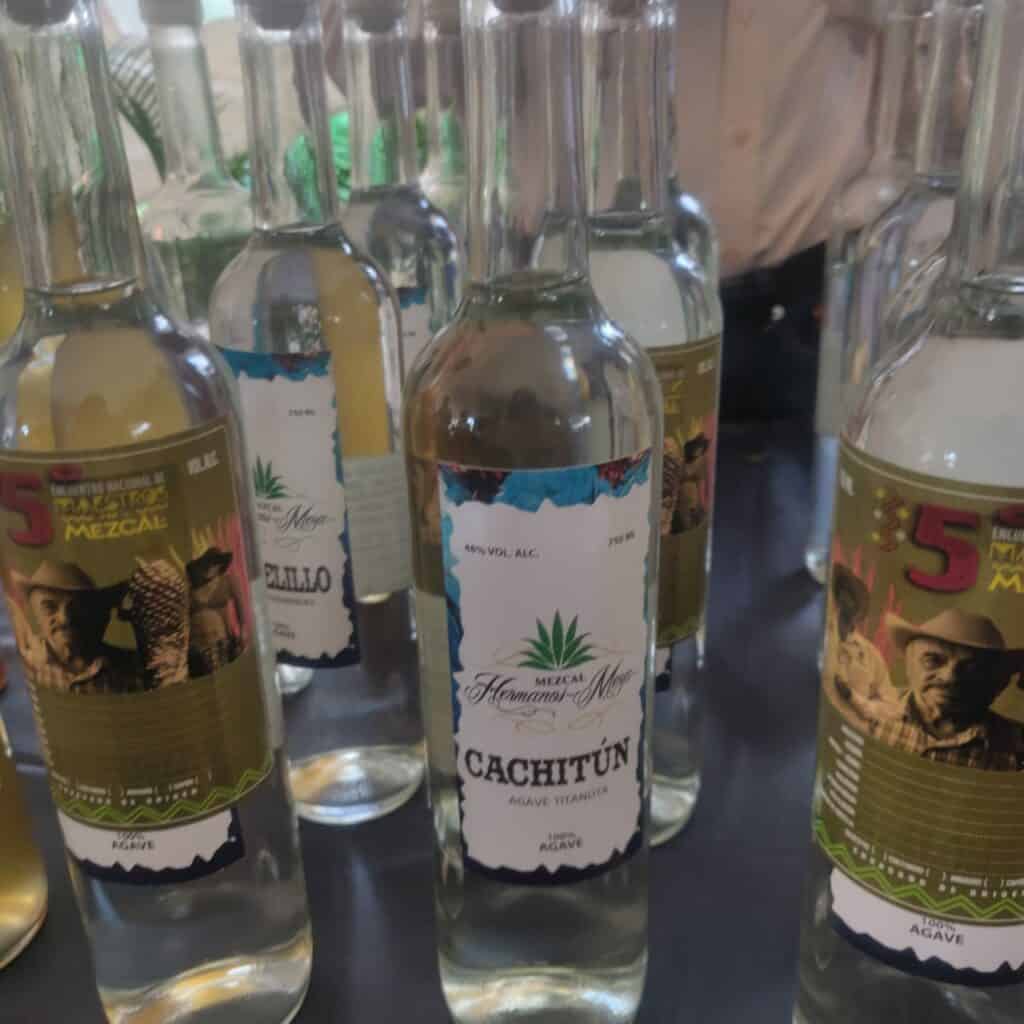
So what is the Encuentro?
The Encuentro is not your regular trade show, and is perhaps the greatest opportunity to have a conversation with members of familias mezcaleras who travel only for the weekend to share part of their traditions in CDMX. Attendants can taste, buy bottles and also enjoy the wide array of food and snacks available throughout the day, and run the gamut from general public to mezcal aficionados to bartenders and distributors, many traveling to the CDMX just for the weekend. According to Rion Toal, who has been working with Maestros del Mezcal since it was founded, the Encuentro has improved every year, helped in part by moving to a ticketed event charging now 150 pesos per person which has allowed the organization to create programs for the producers and underwrite some of the expenses that producers might have in attending the event.
The greatest challenge for the Encuentro has been convincing producers to come. Many had never left their towns before and usually had no experience selling their product outside their community. For that reason, hosting a contest as part of the event is a way to inspire potential exhibitors to travel to CDMX and participate. “The contest was created to increase their visibility, allowing them to travel, come out of their town and learn from others” shares Toal. “However, we know that not everyone is a salesperson so the outcome in terms of sales varies depending on each brand.” This is why Maestros del Mezcal provides training so producers can improve their sales abilities. Once they see the demand that their product may have, they become more conscious about the value of their work.
Producers pay about 1,800 pesos (about $95 USD) which includes accommodations and meals, an investment they hope to get back with the sales they make at every event. However, their ROI might not only be translated into cash but maybe in visibility or engagement. But how that is measured is a question as most participants do not have any tools to measure their results to compare the success with previous years and evaluate in a practical way if it is worth their time and effort to attend.
According to attendant numbers provided by Alcantara, they have not yet returned to their pre-pandemic numbers, which averaged about 3,000 people versus 2,800 people this year and last. I did notice that a few producers mentioned this year felt slower than the previous year. One reason might be that Maestros del Mezcal has been diversifying its efforts by expanding the Encuentro with the creation of additional events such as the Encuentro de Jóvenes del Mezcal and Encuentro de Mujeres del Mezcal. Given the appeal of these events for folks outside of Mexico, they might dilute the expectations among the people interested and having to choose which one to attend.
Attending the event last year, I noticed a significant number of foreign visitors mostly from the US and locals from the hospitality industry enjoying themselves but also, looking for the next new and good thing. The event has also become a draw for people looking to connect with producers in order to export products. In response, throughout the venue you could see flyers posted with guidelines on how to make business deals with the exhibitors. “Do not demand contracts; do not demand quantities or agave varieties beyond the traditional (production); do not bargain; meet the community and understand their wishes and needs; establish a relationship beyond the commercial purposes.”
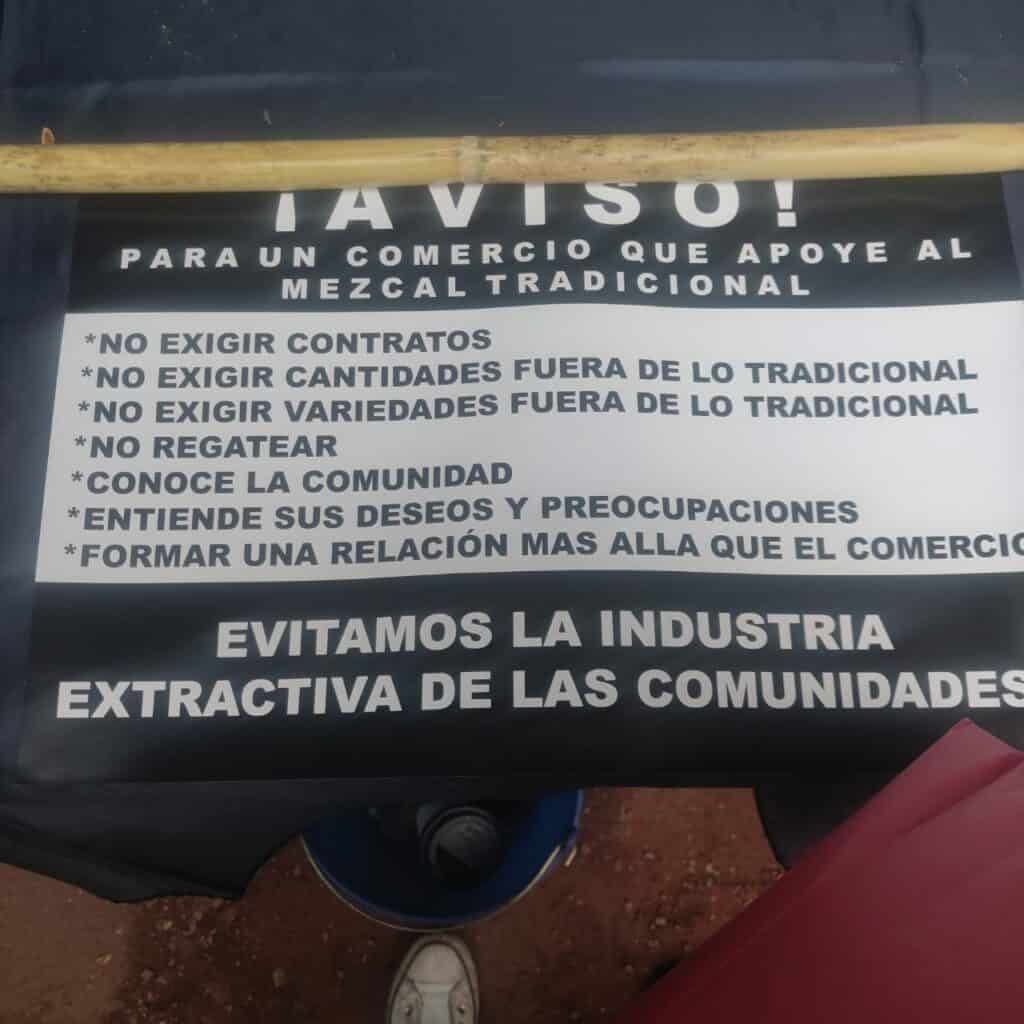
As I was reading this while standing next to a producers table, I overheard how a man approached a producer and asked her the prices of mezcal for his restaurant in CDMX. It was Eva Cruz from the Oaxacan Mixteca, Nochixtlán in San José Las Minas. A small town in which 99 per cent of the population makes mezcal. Her wholesale price, $600 pesos per liter and it is one of the best arroqueños I have tried, distilled twice in clay pots using only wild agave capón. She told me this was her first time at the Encuentro, it was Sunday at noon and she had only sold four bottles at $600 pesos each. She said it had been a slow weekend for her but I hope it was only because of the time of the day we spoke.
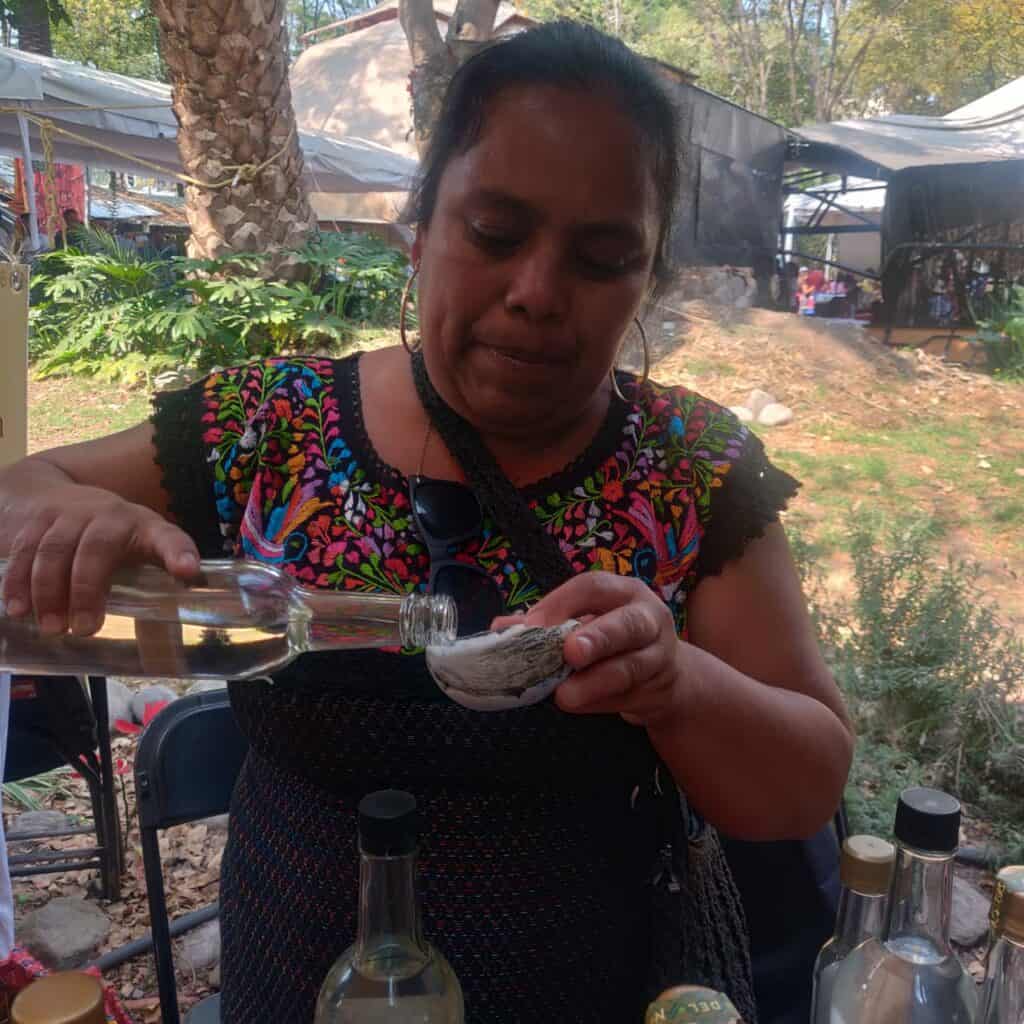
Toal mentioned that this year, a regular visitor to the Encuentro asked if there were plans of fixing the prices of the bottles available for sale. He responded that there are no plans to do it, not only because it depends on the market and the rising prices of agave but because it is up to the producers to establish their own. The average price per bottle when the Encuentro first began was between 300 and 400 pesos, this time the minimum price I saw started at 600 pesos and went as high as 2,500 pesos. While I found Eva’s wholesale price low, the retail prices I saw seemed fair taking into consideration how inflation has been on the rise since the end of last year.
Patience and hard work pay off
While talking to Toal, I can see how putting together this event is not an easy task…at all. And after five editions, there is always room for improvement. Many of the tables showed a new generation of producers that are taking the lead, young people that studied a professional career outside their home towns and are now coming back to help in specific areas such as sales and distribution or the making process itself.
It is the second year that Alexis Canales Angeles from Santa Catarina Minas attends the Encuentro de Maestros de Mezcal and soon will be exporting to New York. He started his own brand, “Pasion Ancestral ” in 2021. Alexis comes from a mezcal producing family led by his great grandfather Don Juan Viejo who started making mezcal in 1894 and once he passed away, his two sons kept the production until the palenque closed in 1987. Alexis learned about mezcal from his grandfather who would only distill once or twice a year. He now has his own palenque and is part of a new generation of mezcaleros in the region who are recuperating their family traditions. I tried the becuela which he described as a kind of tepeztate, which had a gentle and enjoyable flavor.
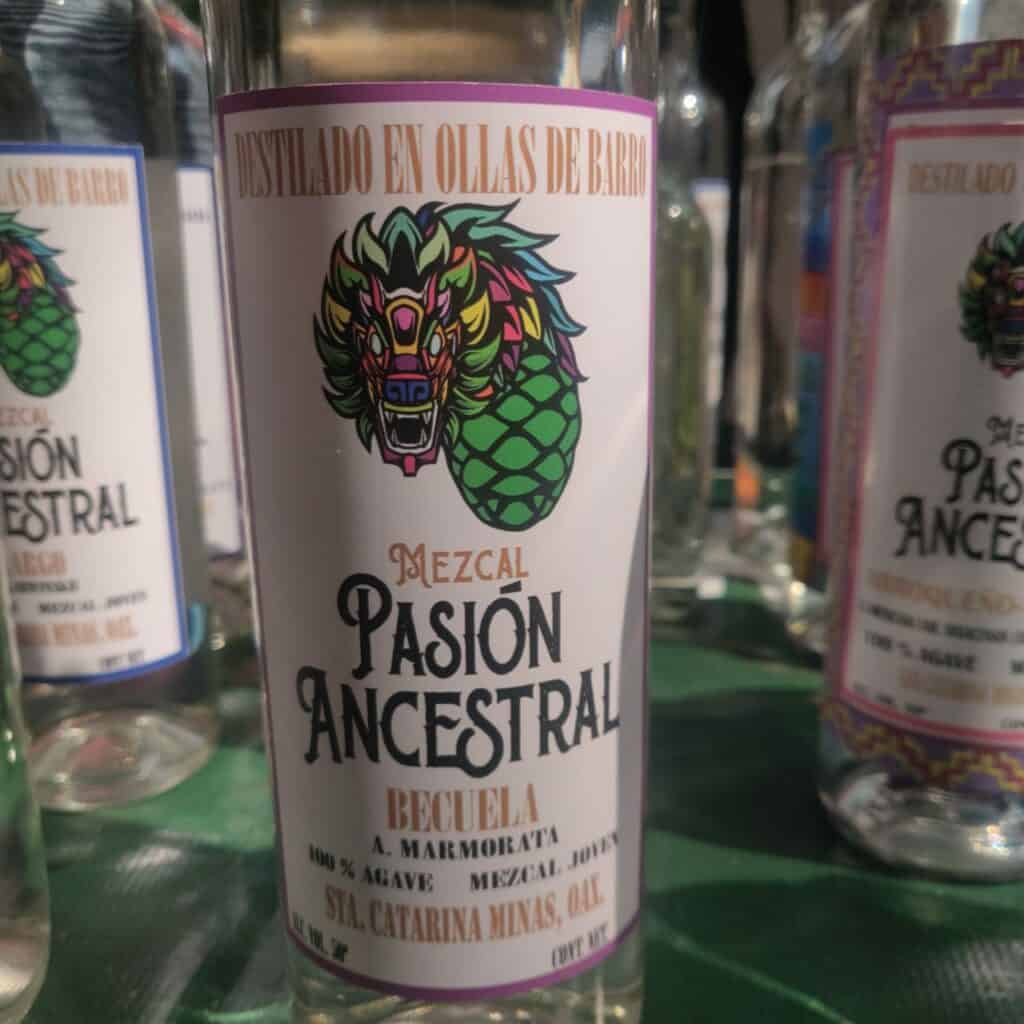
Sandra Silva Pérez from San Pedro Totomachapam, Oaxaca learned to make mezcal from her husband whose father was a maestro mezcalero. This is their third time attending the Encuentro through which they have expanded their network by meeting other maestros and maestras. Their sales have improved and they are exporting to the US market with their own brand called Totoy. Also, the family behind Mezcal Coatepec from the Mixteca Poblana, has gotten very good results out of their participation at the Encuentro. Clara Martínez and her siblings inherited the trade from their parents who are 3rd and 4th generation mezcaleros. Clara moved to Tehuacán to study architecture and even though she owns a construction business, she also continued with the production of her family’s mezcal. They produce about 1500 liters per year with only wild agave from different varieties. In the past six years, the growth of mezcal in their region has benefited the whole supply chain in a way that mezcal surpassed the production of pitahaya or dragon fruit and it is now the main economic activity of the town and the main source of income for the family.
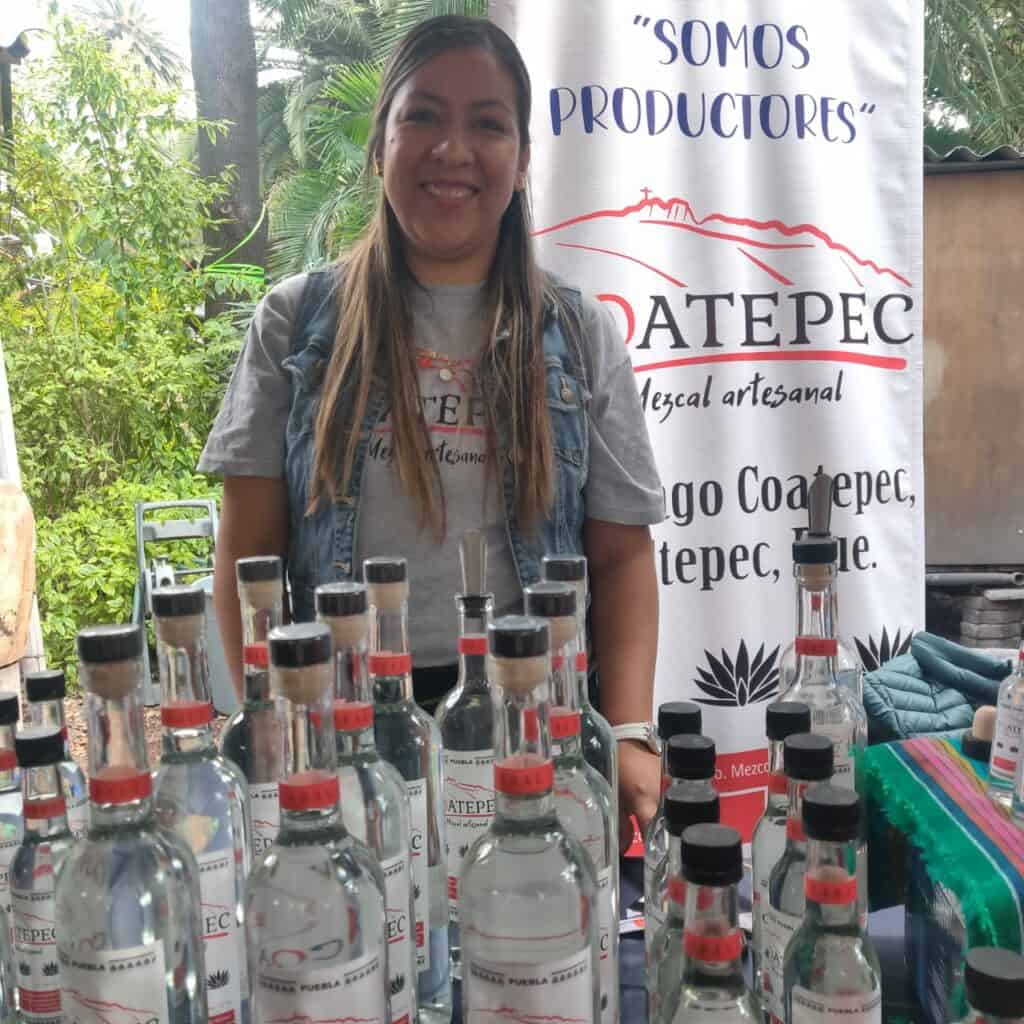
Over the years several producers have made important connections or have had the opportunity to present their brand at the Encuentro before launching in the US, Los Ocotales, Palomas Mensajeras and Aguerrido are just a few that come to mind.
Beyond the Encuentro – a brand and legislation
One of the goals of Maestros de Mezcal is the integration of a collective brand that would incorporate all these small producers who preserve traditional methods and produce small amounts of mezcal or agave distillates under the name of the non-profit.
In 2022, Maestros del Mezcal exported for the first time as a brand with a small container of 483 bottles to San Francisco, CA. The container included a variety of mezcal from 15 producers such as cupreata from Guerrero, cupreata from Oaxaca, espadilla from Oaxaca, manso from Zacatecas, inaequidens from Michoacan, tepextate from Oaxaca, lechuguilla from Chihuahua, bacanora from Sonora, a criollo from the Estado de Mexico, a mexicano from Oaxaca, and an espadín from the Oaxacan Mixes region. It bears noting that this shipment sold out right away.
At the recent Encuentro, 10 out of the 100 exhibitors had their own label and the rest were using the Maestros del Mezcal label. A nice surprise was to see Gloria Garcia, a 25 year old maestra mezcalera from Logoche, Miahuatlan, Oaxaca who came back this year but now with her own brand called “Santo Llanto”. Additionally, one of her batches was picked up by Neta.
Toal recognizes they need more structure to advance on the creation of the brand to continue exporting.
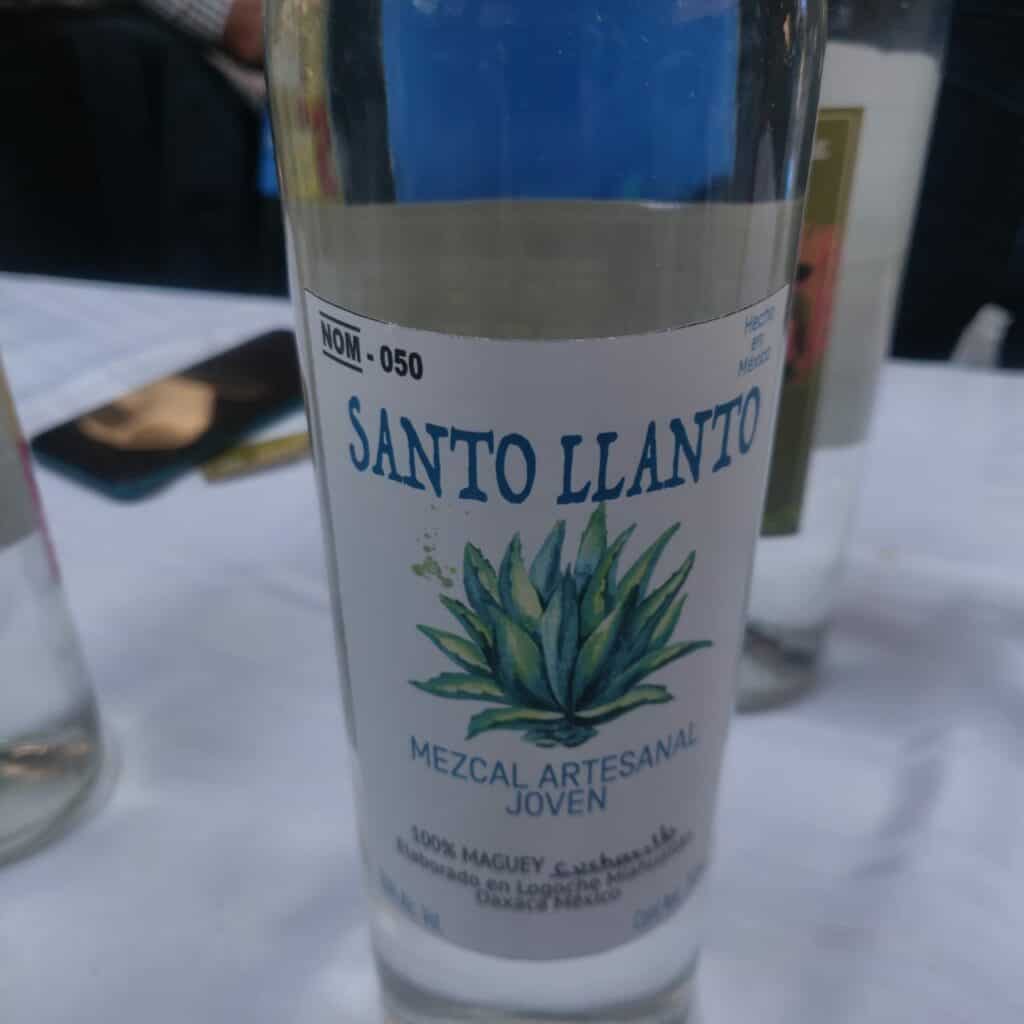
There is also growing involvement in federal legislation. In 2019, Senators from Movimiento Ciudadano (MC), a center-left political party, proposed a bill called Ley de Desarrollo Sustentable del Maguey Mezcal also known as Ley Maguey which Susan reported briefly in a previous story. The complete text in Spanish is available here. Maestros del Mezcal has been one of the main supporters of this legislation and Abel has represented the community of mezcaleros at Congress through different visits and events in which some of the producers from different states shared their experience with legislators.
MC or the Orange Caucus as they call themselves, have a political platform focused on bringing what they call a New Deal to Mexico by changing the way older parties have been governing in social, economic and environmental aspects. In the city of Monterrey, which has been severely impacted by drought and water shortages, they were strongly pushing for their own version of a Green Deal to combat climate change. In that sense, they are proposing a greater legal framework in which the federal government takes the lead on the regulation of mezcal by prioritizing the work of small producers in order to protect the biocultural diversity of maguey.
The ultimate goal is to have a more efficient management of the industry and to improve the quality of life of producers from rural communities. According to a statement provided by the Orange Caucus, the bill’s intent is to protect producers from rural and marginalized communities for whom mezcal and agave distillates can be an important source of income. They mean to break the current production cycle where an intermediary pays 100 to 150 pesos per liter for a batch of 300 hundred liters. The producer invests time, labor and natural resources and yet, is the one in the supply chain with the least profit. The alternative would be to have both producers and marketers benefiting fairly and equally while generating a sustainable development system that protects the social and bio cultural heritage of the spirits of Mexico.
In order to change this dynamic, their bill proposes a network to reinforce collaboration mechanisms and coordination among federal, state and municipal entities. It is an ambitious proposal since it requires a lot of regulation and the creation of new entities. For example, a National Regulating Commision in charge of managing many aspects that go from fixing prices of maguey to international promotion, certification and training, and regulation of byproducts and its uses. And it would require regional branches to ensure the execution of the regulation is applied in the different levels. It provides more importance to the promotion of scientific investigation by the creation of a National Institute of Scientific and Technological Research of Maguey- Mezcal. However, it does not mention or elaborate on the growth of destilados de agave (non certified mezcal) in the market.
Though some producers like Gloria García have attended the events at the Senate, and most of the exhibitors are aware of Ley Maguey with many bottles branded as such, most were not able to talk about the specifics and spoke only how the bill calls for the reduction of the alcohol income tax from 52% to 20%
The bill is in and waiting for the opinion to be dictated at the Commission of Agriculture, Rural Development and Fishing from the Mexican Senate. Hopefully this doesn’t mean it will be another year waiting for an outcome.
The challenges of building a brand
It is not a secret that being a non-profit in Mexico can be discouraging and sometimes disappointing because of the obstacles to raise funds, an ever changing legal framework that limits the reach of the organizations and the constant dealing with bureaucracy. But Maestros del Mezcal has come a long way and has given a platform to the unheard voices of many producers. The organization is very ambitious with its goals and it seems like they are trying to accomplish many objectives at once. Even if they get the bill passed, there will still be work to be done representing the cause of traditional mezcal. And if the brand grows, along with any commercial commitments, it will be interesting to see how both projects, the brand and the organization, perform on a larger scale.
For instance, the organization eventually will have to adapt their model of promotion in terms of how the Encuentro works. If they invest more time and resources in their brand, how does that play when representing other producers that might want to create their label and go on their own? A collective brand is made to benefit small producers who want to sell their services or products and do so by sharing a label with other peers in order to give visibility to their offer and gain some market share. The Encuentro has without a doubt pushed producers to break the barrier entries to a market dominated with many companies of mass produced mezcal. But, are the members ultimate goal to get their own brand instead of being part of the collective?
The Ley Maguey is intrinsically connected to the purpose of Maestros de Mezcal in supporting traditional mezcaleros who usually have other jobs either in the farmland or in the city. Mezcal is often referred to as the most sustainable spirit in the market, primarily because it was originally only made and consumed seasonally, which is why mezcaleros have other jobs or sources of income. Efforts to turn producers into marketers are hard because the capitalist dynamic, which pushes for growth of the business and product, is not part of the essence of mezcal. But, for most producers, acquiring these skills seems necessary in order to survive in the current market environment. In that sense, how can the Encuentro format allow for participants to measure results more efficiently? I.e.how is the event enabling them to earn income? How are they engaging with the consumers? Could the team behind the Encuentro invest more resources and connections to apply marketing tools and technology directed to the generation of leads and follow up?
Moving forward with the Encuentro
The Encuentro has a unique personality that people already recognize which makes it difficult to make changes to the event format. Because the event is more than just a tasting, it must continually ask itself these important questions as it continues to grow. Is the contest the only or best way to help producers be more competitive? How can we talk about gusto histórico while putting producers to compete with each other? How can we decide if one mezcal is better than the other? Is this level of competition generating a healthy interaction among peers or does it create conflict within the communities? How is biocultural diversity represented throughout the Encuentro? How are those stories being heard, promoted and monetized?
The potential of using storytelling is huge and making the biocultural heritage part of the exhibition is a crucial part of that storytelling. Every region represented at the Encuentro could showcase products, craft and food from their communities. Besides mezcal, some of the familias mezcaleras produce other products that they can sell as well. At this year’s event, Herencia Chontal, a family of producers from Yautepec, Oaxaca had samples at their table of very well seasoned grasshoppers or chapulines and roasted shelled pepitas. By the taste and size – at least two inches long, one could tell they were harvested in the wild not produced on a farm. They were full of texture and flavor and were delicious. Also, they had tostadas made with heirloom corn masa or nixtamal mixed with cooked quiote, a chewy and sweet snack to enjoy while sipping mezcal.
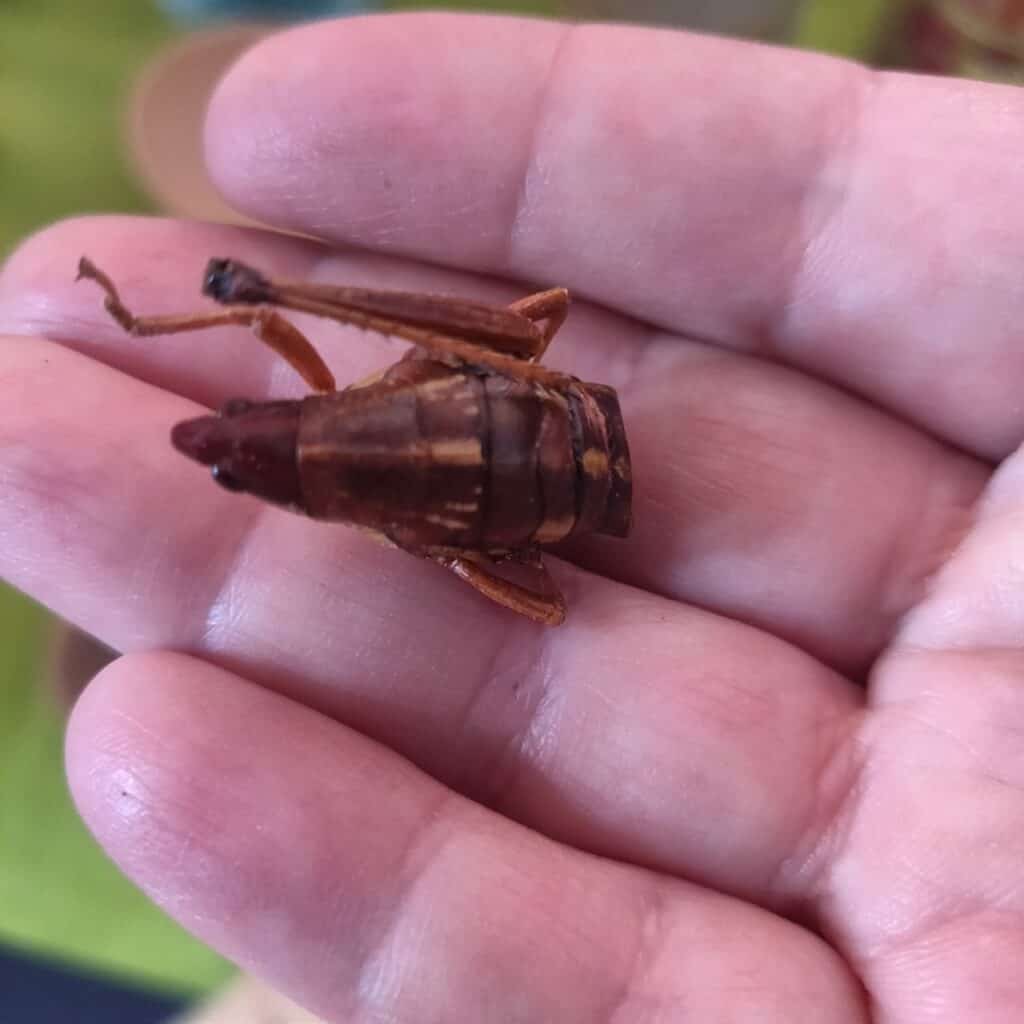
With new trends in the spirits industry like no alcohol or low alcohol drinks and new consumption habits with people reducing the frequency of their consumption, producers need to reinforce their storytelling beyond mezcal and to consider highlighting other products that share a symbiotic relationship within the maguey-mezcal system. It is, after all, the bio cultural diversity that distinguishes traditional producers from everyone else.

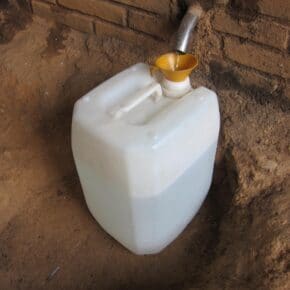

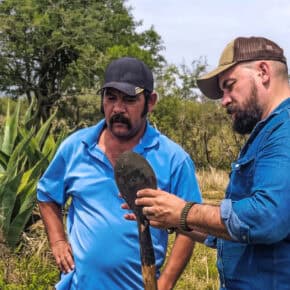








Leave a Comment